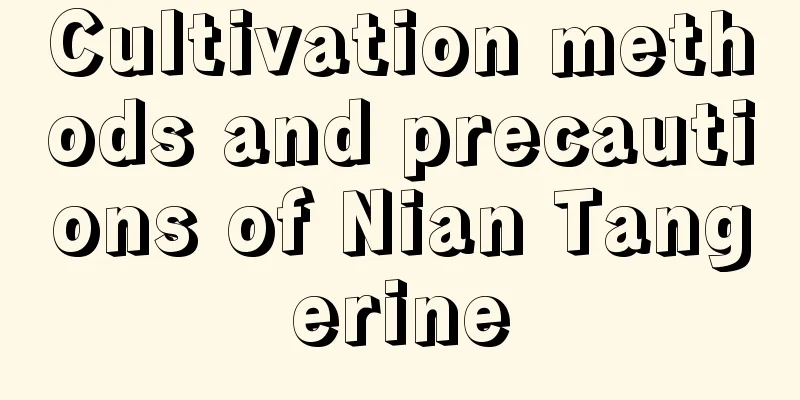Cultivation methods and precautions of Nian Tangerine

1. Maintenance methods1. Soil: When planting, the soil should meet the requirements of fertility and thickness, which is beneficial to its growth. In addition, slightly acidic or neutral soil is best. 2. Water: When the orange is in the growth period, water it when you see the soil surface is dry. Generally, watering it once a day is sufficient. If the weather is dry, spray water on the leaves. In winter, just wait until the soil is completely dry before watering. 3. Nutrients: When cultivating, put base fertilizer around its roots, such as some peanut crumbs. During the growth process, compound fertilizer should be applied once every half a month, and no fertilization is needed in winter. 4. Light: It is best to place it on a south-facing balcony so that the light will be softer, because it is afraid of strong light and high temperature. If placed outdoors, remember to provide shade during the hot summer months. 2. Breeding techniques1. Pruning: When it is still a young tree, mainly light pruning is used to cut off the longer parts of the main branches and secondary branches. This will allow it to grow more branches and continue to shape it during the growth process. 2. Repotting: When repotting the orange, first remove the loose soil on the outside, leaving the thick small soil ball in the center. Afterwards, cut off the diseased and old roots, put tiles in the new pot, apply base fertilizer all around, put the oranges in and cover them with new soil. 3. Problem diagnosis and treatment1. Anthracnose: This is a very common disease that will cause many irregular spots to appear on its leaves. If diseased leaves are found, they should be cleaned up in time, and attention should be paid to drainage, and spraying with pesticides for prevention and control. 2. Sooty mold disease: Sooty mold disease will affect its normal growth and ornamental value. When the disease first occurs, many small coal spots will appear on the leaves, and when the disease is serious, there will be a whole layer of coal powder. If the disease occurs, be sure to spray the pesticide Lecithin in time and use Dimethoate to control aphids. IV. Other issues1. Is it poisonous? It is an ornamental plant, not strictly speaking a fruit. However, it is not poisonous and can be eaten. It just tastes bad, so it is best not to eat it. 2. Can it be grown at home: It is an ornamental plant that likes sunlight and can be grown at home for viewing. It only needs to be placed in a location with soft light and avoid high temperature exposure. |
<<: Cultivation methods and precautions of beauty cherry
>>: Cultivation methods and precautions of bird's tail flower
Recommend
How to grow Epiphyllum
Many people have heard of the fleeting beauty of ...
Methods and precautions for propagation of Osmanthus fragrans by cuttings
Reproduction method of Murraya paniculata Osmanth...
What kind of soil is good for growing asparagus fern
1. Soil selection When growing asparagus fern, it...
The autumn heat is here. If you do these stupid things, your flowers will die immediately!
When watering in the beginning of autumn, don’t w...
How to grow dragon beard orchid, the leaves are green and shiny
Fertilization Before planting the dragon beard or...
The difference between golden amber and cactus
The difference between golden amber ball and cact...
If you cut the Clivia once, 6 buds will sprout in 10 days, and the orchid will become so big that the pot can’t even hold them all!
Clivia "Beheading" Diary 1. Clivia is t...
Precautions for planting baby's breath
1. Germination If you want the baby's breath ...
Apricot tree growth environment conditions and characteristics
Apricot tree growth environment conditions and re...
How to grow lucky bamboo in water? What should I pay attention to?
Lucky bamboo is generally maintained by hydroponi...
What should I do if the mountains become soft?
reason (1) Too much or too little watering. Too m...
How many species of Dieffenbachia are there? Is it good to grow Dieffenbachia at home?
1. How many types are there There is only one spe...
What to do if Kalanchoe grows taller
1. Old plants After the Kalanchoe has been cultiv...
What are the cultivation methods and precautions for potted azaleas?
Rhododendron Introduction Rhododendron is also ca...
Recommended flowers for expressing love on Christmas Eve and Christmas
1. Confession of first love 1. Lilac If it is you...









